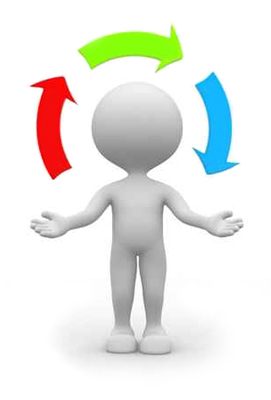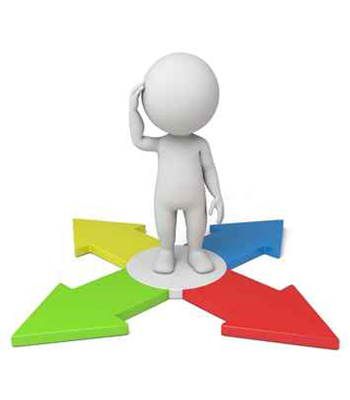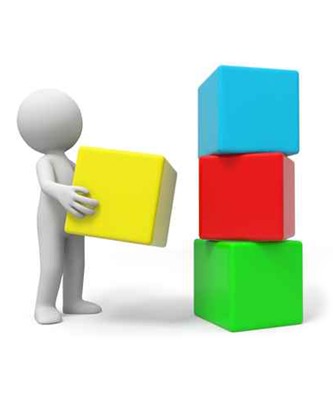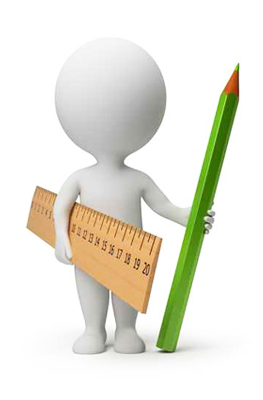✸ Related Information
Use REIN Vertical Tabs to display related information
REIN Vertical tabs can be used to organize related information on a single page. This incorporates interactive control for users.
Benefits of REIN
 Classifying
ClassifyingClassifying information into categories and groups makes life more understandable and manageable. It helps us answer the essential components of information discovery: who, what, when, where and why. Classifications, such as the taxonomy of animals and organisms, can be very sophisticated systems of information which is why great knowledge can be derived from them. The necessity to classify content is essential to teaching and learning. Classifications allow unstructured information to be better organized. They are meaningful models for organizing things in the real world. Categorizing objects, concepts, and facts not only allows learners to readily identify information but allows instructors to demonstrate attributes and relationships among them. As such, it helps students conceptualize, think logically, and apply rules, all leading to the ability to develop higher-order thinking skills. REIN offers several different objects that allow information to be classified or categorized.
 Listing
ListingLists are infinitely present on web pages of the world wide web and for good reasons. People outline information in lists because learners appreciate them. In general, people believe that knowledge may be derived from a list— that meaningful information may be encapsulated in such an orderly, fixed structure. The presence of lists comforts learners as they are subconsciously aware of the reduced cognitive load required to process them. Learners understand that much more time and cognitive energy is required to analyze and organize a chaotic space of words. For this reason, it is not uncommon for readers to scan large quantities of text in search of lists that summarize the significant details of a topic. They intuitively understand that details in a list can later be recalled based on the order and location of it in their memory. Essential to many REIN objects is the opportunity to create lists in a variety of linear and non-linear formats.
 Sequencing
SequencingA sequence or process is a series of actions, changes, or functions taken in order to achieve a particular end. Processes exist in nature, business, government, family and more. They are inherent in life and thus education. A math student learns the order of operations. A good story is written with distinct order of events. Businesses operate more efficiently when processes are utilized. Individuals operate sequentially when getting dressed, preparing meals, or driving to and from work. Sequences allow a learner to chronologically visualize, offering greater meaning and clarity of information while improving proficiency and productivity. REIN can be effectively utilized to outline a sequence or process, where the nature of the content requires illustration of order.
 Problem-Solving
Problem-SolvingA problem exists when a goal has been identified but information about how to reach that goal is unknown. Inherent to solving problems is the requirement to think on a high level. Problem-solving involves reasoning in both creative and critical terms. It requires learners to analyze parts of a complex system while identifying how the parts relate. Problem solving is fundamental to teaching and learning because problems and goal setting are inherent to everyday life. For this reason, improving learners' problem-solving skills is important to all educators. A problem-solution-explanation activity where learners can work through a problem on their own, check the solution, then review the explanation for further understanding is achievable via various REIN components.
 Engaging
EngagingEngagement refers to the degree of interest and affection that students demonstrate throughout the learning process. This reality extends the level of motivation they have to progress through the learning material. The notion of engagement is founded on the belief that learning improves when students are motivated. Inversely, learning suffers when students are bored or simply disengaged. REIN allows students to engage with instructional content via a more active and self-directed process. The interactive nature of REIN enables learners to process information in a non-traditional manner, utilizing the latest web technologies that 21st century learners have become accustomed to.
 Reflecting
ReflectingReflection requires thinking for an extended period of time. In the process, it allows learners to cement their knowledge. It promotes the integration of new learning with prior learning in order to promote complex mental constructs. In the words of American Philosopher John Dewey, "We do not learn from experience...we learn from reflecting on experience." The ability of REIN to organize and summarize instructional content not only facilitates learning but is appropriately designed for reflection. The nature of REIN provides students with the opportunity to discover a deeper understanding of the learning material. It offers a platform for making conceptual connections, the foundational prerequisite to meaningful reflection and higher level thinking and learning.
 Chunking
ChunkingThe ability of a learner to process information and store it away for long-term use is directly related to a learner's working memory which, in general, has a limited capacity to hold information. "Chunks" or groups of instruction are easier to commit to memory versus uninterrupted, unordered arrangements of information. Research demonstrates that learners remember more information when it is assembled into meaningful, smaller units of instruction. This organization allows the working memory time to encode chunks of information and make mental connections with existing mental structures. In general, chunking is an effective strategy to facilitate learning. The nature of REIN functions as ideal chunking mechanisms, as mnemonic devices that enhance memory, retention and comprehension of instructional content.
 Designing
DesigningEffective online course design requires a pedagogical shift in teaching and learning. Web pages and online tools become the media by which learners learn, not the traditional blackboard so often utilized by classroom teachers. This reality doesn't always translate well for classroom instructors who are required to adapt a new approach to presenting and displaying their instruction. REIN offers a variety of ways to create compelling graphic organizers that present content in an appealing, consistent manner. REIN integrates text, graphics and/or multimedia into a single space, appealing to different learning styles. It enables instructors to strategically aggregate large amounts of content into meaningful, interactive learning objects. The different REIN components allow a variety of interactive objects to be utilized in a lesson. The choices available in REIN also allow the most appropriate REIN object to be chosen based on the structure of the content.